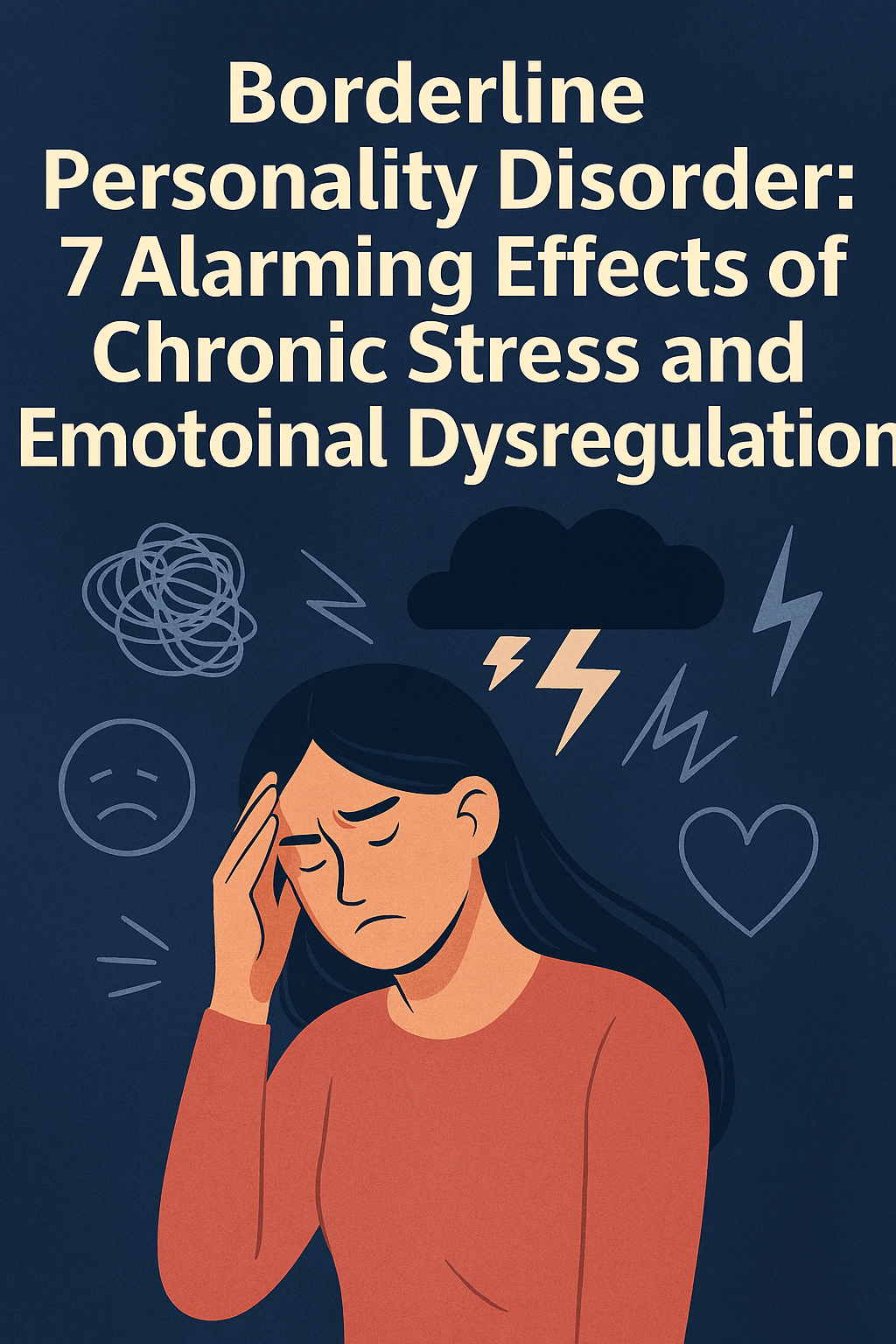
Borderline Personality Disorder: 7 Devastating Ways Stress and Emotions Can Destroy Mental Stability
Title: How Chronic Stress and Unregulated Emotions Can Lead to Borderline Personality Disorder
Introduction: Understanding Borderline Personality Disorder (BPD)
Borderline Personality Disorder (BPD) is a complex mental health condition characterized by emotional instability, intense interpersonal relationships, distorted self-image, and impulsive behaviors. While genetics and brain structure play a role, recent studies show that chronic stress and unregulated emotions significantly contribute to the development of this disorder.
In today’s fast-paced and emotionally demanding world, many individuals experience long-term psychological stress. When this stress is combined with a lack of emotional regulation, it can set the stage for BPD. Understanding this pathway is crucial for prevention, early intervention, and effective treatment.
How Chronic Stress Affects Mental Health
Prolonged exposure to stress, especially during childhood or adolescence, can severely impact emotional and cognitive development. Chronic stress activates the body’s fight-or-flight response repeatedly, leading to dysregulation in hormones like cortisol.
Over time, the brain adapts to a constant state of hyperarousal, causing heightened emotional reactivity. This can result in mood swings, impulsivity, and hypersensitivity to perceived rejection—all hallmark traits of borderline personality disorder.
Common sources of chronic stress include:
- Emotional or physical abuse
- Neglect in childhood
- Constant conflict or chaos at home
- Bullying and social rejection
- Unstable parental relationships
These experiences can rewire brain circuits involved in emotion regulation and interpersonal functioning, especially if they occur during key developmental stages.
Unregulated Emotions and Their Role in BPD
Emotional regulation refers to the ability to manage and respond to emotional experiences in a healthy way. When individuals grow up in environments where emotions are invalidated, dismissed, or punished, they may struggle to process their feelings effectively.
Without proper coping mechanisms, intense emotions like anger, fear, or sadness can become overwhelming. This leads to outbursts, self-harming behaviors, or emotional shutdowns—all commonly observed in those with borderline personality disorder.
Traits linked with emotional dysregulation in BPD:
- Rapid mood shifts from joy to rage
- Chronic feelings of emptiness
- Intense fear of abandonment
- Difficulty trusting others
- Emotional black-and-white thinking (idealization vs. devaluation)
The Connection Between Childhood Trauma and BPD
Numerous studies have linked early trauma to the development of borderline personality disorder. Childhood trauma disrupts the formation of a secure emotional base and alters the brain’s ability to regulate emotions.
Children exposed to toxic stress may:
- Internalize negative beliefs about themselves
- Develop maladaptive coping strategies
- Experience dissociation or detachment
- Struggle with forming and maintaining relationships
As these children grow into adults, their emotional world often remains chaotic, leading to patterns consistent with BPD. This highlights the importance of early emotional support and trauma-informed care.
How Stress and Emotions Interact to Trigger BPD
Stress and emotional dysregulation often work together to fuel borderline personality disorder. For instance, a stressful event like a breakup may trigger intense emotions in someone with poor regulation skills. They may react impulsively, lash out, or engage in self-destructive behaviors.
This cycle of stress-reactivity becomes habitual. Without intervention, it creates long-term emotional instability and interpersonal difficulties. Over time, these patterns harden into the criteria that define BPD.
Common behavioral signs include:
- Suicidal ideation or self-injury
- Volatile relationships
- Identity disturbance
- Intense anger or rage outbursts
- Paranoia or dissociation during stress
Steps to Prevent Borderline Personality Disorder
While some factors like genetics cannot be changed, the impact of chronic stress and emotional dysregulation can be managed and reduced. Preventive strategies include:
- Early Emotional Education: Teach children how to identify, name, and express their feelings appropriately.
- Safe Home Environment: Minimize exposure to domestic conflict and emotional neglect.
- Therapeutic Support: Cognitive Behavioral Therapy (CBT) and Dialectical Behavior Therapy (DBT) are particularly effective for those at risk.
- Mindfulness Practices: Techniques like meditation and breathing exercises help regulate emotional responses.
- Healthy Attachments: Encourage secure relationships with caregivers, friends, and mentors.
Why Professional Help is Essential
Borderline personality disorder is a serious condition that rarely improves without professional support. Therapists trained in trauma, attachment, and emotional regulation can help individuals:
- Develop coping mechanisms
- Reframe negative thought patterns
- Heal from past trauma
- Build healthy self-identity
If you or someone you know is struggling with emotional volatility or signs of BPD, seeking timely intervention is crucial. Mental health professionals offer a safe and structured path to recovery.
Conclusion: Don’t Let Stress Rewrite Your Identity
Chronic stress and unregulated emotions are more than just short-term discomforts—they can reshape a person’s emotional world and lead to long-term psychological disorders like borderline personality disorder. But awareness is the first step toward change.
With the right interventions and support systems, emotional wounds can heal, and individuals can reclaim control over their mental well-being. Recognizing the warning signs early and responding with compassion and care can prevent years of emotional struggle.

